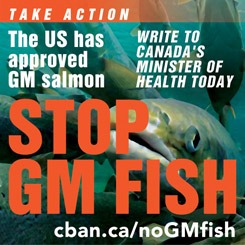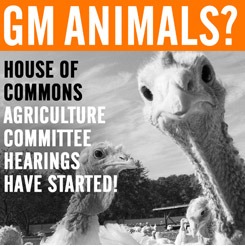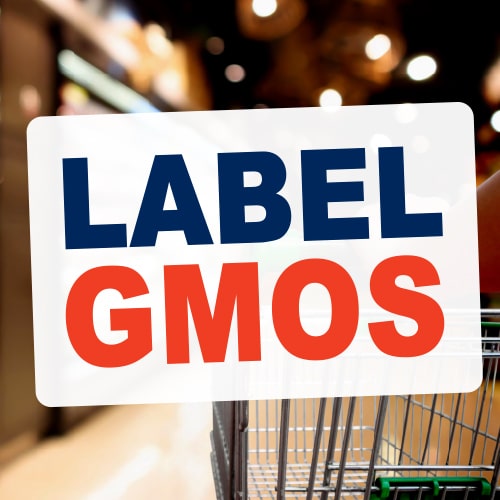Pesticides
Augmentation de l’utilisation des pesticides
Les quantités de pesticides utilisées ont augmenté avec le développement des cultures transgéniques. [1] En effet, avec une plante tolérante à un herbicide comme le canola, le soya ou le maïs Round-Up Ready, l’agriculteur peut utiliser encore plus d’herbicides, car l’objectif même d’une telle plante OGM est d’être tolérante à un épandage massif de l’herbicide Round-Up. Les entreprises, comme Monsanto, qui fabriquent les herbicides sont les mêmes que celles qui mettent au point les OGM.
Aux États-Unis, Charles Benbrook a démontré qu’entre 1996 et 2011, dans des cultures GM résistantes aux herbicides il y a eu une augmentation de 239 000 tonnes dans l’utilisation des herbicides, tandis que les cultures GM de type Bt ont a observé une réduction des applications d’insecticides de 56 000 tonnes. Dans l’ensemble, l’utilisation des pesticides a augmenté d’environ 183 000 tonnes soit environ 7%.
Au Canada, selon les données tirées des rapports annuels de Santé Canada, cette quantité a augmenté de 130 % en 2011, passant ainsi à 50,3 millions de kilogrammes.(voir p 8 de notre rapport)
De façon similaire, l’association industrielle CropLife Canada rapporte que les ventes de pesticides ont augmenté de 73 % entre 2001 et 2013, passant de 1,27 milliard à 2,2 milliards de dollars.
Le glyphosate est l’ingrédient pesticide le plus vendu au Canada; viennent ensuite le 2,4-D et le glufosinate d’ammoniuma. Entre 2005 et 2011, l’utilisation du glyphosate au Canada a triplé, passant de 30,2 à 89,7 millions de litres dans l’ouest du pays, et de 3,8 à 12,3 millions de litres dans l’est du pays.
L’augmentation de l’utilisation de pesticides au Canada ne découle pas uniquement de l’expansion de la superficie des terres agricoles. En effet, entre 1995 et 2011, la superficie des terres mises en culture au Canada a très peu augmenté, passant de 34,9 millions à 35,3 millions d’hectares. En fait, l’augmentation des ventes de pesticides au Canada s’explique davantage par l’augmentation de leur « intensité d’utilisation », soit la quantité de pesticide appliquée par unité de surface.
Pour une information complète sur les impacts sur notre environnement – Lire notre rapport de l’enquête OGM intitulé Les OGM sont-ils bénéfiques pour l’environnement ?
More Information:
Updates
October 2016: A new review (monograph) on glyphosate from Pesticide Action Network Interantional
August 2015: A new article in the New England Journal of Medicine argues that assessment of genetically modified food safety should also be tied to assessing the human health risks of the herbicides applied to GM crops. « We believe that the time has therefore come to thoroughly reconsider all aspects of the safety of plant biotechnology…The National Toxicology Program should urgently assess the toxicology of pure glyphosate, formulated glyphosate, and mixtures of glyphosate and other herbicides. »
The International Agency for Cancer Research (IARC) of the World Health Organization (WHO) has concluded that:
- Glyphosate, the world’s most-used chemical ingredient for weed control, is a “probable human carcinogen” (March 2015)
- 2,4-D, the second most-used herbicide in Canada, is a « possible human carcinogen » (June 2015)
Resources
Pesticides and GM Crops
« Are GM Crops Better for the Environment? » May 2015, CBAN’s second report in the GMO Inquiry 2015 documents the rise in herbicide use with genetically modified crops in Canada and details the environmental impacts.
« What next after a ban on glyphosate—more toxic chemicals and GM crops? Or the transformation of global food systems? » The African Centre for Biodiversity (ACB), the Network for a GE Free Latin America (RALLT) and the Third World Network. June 2015. A number of countries have already taken action to reduce or halt the use of glyphosate in response to the IARC assessment. While glyphosate is still in use and is heavily relied upon for GM soy production in particular, Monsanto and other biotechnology and agro-chemical companies are already planning for business after glyphosate. A plethora of GM crops that are tolerant to multiple toxic herbicides – including 2,4-D and dicamba – are already approved for the market, while Monsanto has recently sought the potential acquisition of Syngenta, the world’s largest producer of herbicides.
Click here for more information on 2,4-D tolerant crops
Pesticides and Pollinators
Hidden Costs of Toxic Seed Coatings: Insecticide Use on the Rise, Factsheet, Center for Food Safety, US, June 2015. Scientists have identified pesticides—specifically a group of insecticides called neonicotinoids (abbreviated as “neonics”)—as likely to be an important cause of declining pollinator populations and poor pollinator health. Neonics are the most widely used insecticides in the world, and have been repeatedly shown to have lethal and sub-lethal effects on beneficial insects.
Pesticide Toxicity
Glyphosate and Cancer Risks: Frequently Asked Questions, Center for Food Safety, US, May 2015
The world’s most used weed-killer is probably carcinogenic – so what? Meg Sears, Prevent Cancer Now, June 2015
Pesticides and Our Health, Greenpeace International, May 2015
Synthetic pesticides have been widely used in industrial agriculture throughout the world since the 1950s. Over time, many of these chemicals have become extremely pervasive in our environment as a result of their widespread repeated use and, in some cases, their environmental persistence. Some take an extremely long time to degrade, such that even those banned decades ago, including DDT and its secondary products, are routinely found in the environment today.
As a consequence of this persistence, and potential hazards to wildlife, effect-related research on the impact of pesticides has increased exponentially over the past 30 years (Köhler and Triebskorn 2013). It is now clear that these effects are wide and varied. Over the same period, scientific understanding of the effects of pesticides on human health and their mechanisms of action has also expanded rapidly, with studies revealing statistical associations between pesticide exposure and enhanced risks of developmental impairments, neurological and immune disorders and some cancers.
Nevertheless, proving definitively that exposure to a particular pesticide causes a disease or other condition in humans presents a considerable challenge. There are no groups in the human population that are completely unexposed to pesticides, and most diseases are multi-causal giving considerable complexity to public health assessments (Meyer-Baron et al. 2015). Furthermore, most people are exposed to complex and ever changing mixtures of chemicals, not just pesticides, in their daily lives, through multiple routes of exposure. Pesticides contribute further to this toxic burden.
More Resources
Synthetic pesticides are not permitted for use in organic food production. Here is more information on the organic standard in Canada.
Organizations with up-to-date information on pesticide toxicity and related issues:








